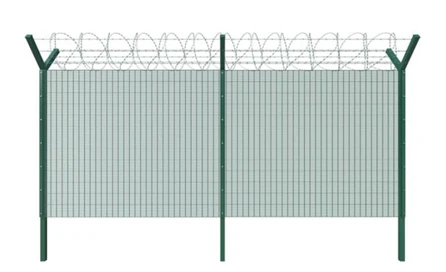
- Afrikaans
- Albanian
- Arabic
- Armenian
- Azerbaijani
- Basque
- Belarusian
- Bengali
- Bosnian
- Bulgarian
- Croatian
- Czech
- Danish
- Dutch
- English
- Esperanto
- Estonian
- Finnish
- French
- Galician
- Georgian
- German
- Greek
- hawaiian
- Hindi
- Hungarian
- Indonesian
- irish
- Italian
- Lao
- Latvian
- Lithuanian
- Luxembourgish
- Macedonian
- Maltese
- Myanmar
- Norwegian
- Polish
- Portuguese
- Romanian
- Russian
- Serbian
- Slovak
- Somali
- Spanish
- Swedish
- Thai
- Turkish
- Turkmen
- Vietnamese
Des . 04, 2024 09:07 Back to list
what is gabion rock
What is a Gabion Rock?
Gabion structures have been utilized for centuries as a solution for erosion control, landscape architecture, and various civil engineering projects. The term gabion originates from the Italian word gabbione, which means big cage. This description is quite fitting, as gabions are essentially wire mesh cages filled with rocks, stones, or concrete. The purpose of these structures is multifaceted, ranging from environmental conservation to aesthetic enhancement.
Composition and Structure
Gabions are typically constructed from high-tensile wire mesh, which is designed to resist corrosion and weathering. The mesh is often made from galvanized steel, stainless steel, or PVC-coated wire to ensure longevity, even in harsh environments. The mesh cages come in various sizes and shapes, making them versatile for different applications. Once the cages are assembled, they are filled with various types of stones or rocks, which can range from small gravel to larger boulders, depending on the project’s specifications.
One of the primary advantages of gabions is their flexibility. They can be easily molded to fit different contours and terrains, making them ideal for use in hilly or unstable areas. Additionally, gabions are permeable, allowing water to flow through them. This characteristic helps prevent water buildup behind the structures, reducing hydrostatic pressure and the potential for failure during heavy rainfall or floods.
Applications of Gabion Rocks
Gabion structures are commonly used for various purposes, including
1. Erosion Control One of the most common applications of gabions is in erosion control. They can be strategically placed along riverbanks, shorelines, and slopes to prevent soil loss due to water or wind erosion. The rocks within the gabions act as a barrier, protecting the underlying soil and vegetation.
2. Retaining Walls Gabions serve as effective retaining walls, especially in areas with loose or unstable soil. The weight and structure of the filled cages help hold back soil and prevent landslides. Their flexibility allows for adaptation to different site conditions, making them a popular choice for civil engineering projects.
3. Noise Barriers In urban areas, gabion walls can be used as noise barriers alongside highways and railways. The mass of the rocks absorbs sound, providing a quieter environment for nearby residents.
what is gabion rock

4. Architectural Features Beyond their functional uses, gabions are increasingly popular in landscape architecture. They can be designed to create visually appealing structures such as garden walls, benches, and seating areas. The natural stone materials offer aesthetic value, allowing them to blend seamlessly into various landscapes.
5. Environmental Restoration In addition to controlling erosion, gabions can be used in ecological restoration projects. They provide habitats for various organisms, including fish and other aquatic wildlife, when installed in river systems.
Benefits of Using Gabions
Gabions offer a multitude of benefits
- Cost-Effective Gabions are generally more cost-effective than traditional building materials. They require less labor and can often be constructed using locally-sourced materials.
- Sustainability Gabion structures are environmentally friendly. They can be filled with natural stones, minimizing the need for synthetic materials. Their permeable nature also promotes groundwater recharge and prevents wetland degradation.
- Durability With proper installation and maintenance, gabions can last for decades. Their resistance to corrosion and weathering ensures longevity, making them a reliable option for various projects.
- Low Maintenance Once constructed, gabion structures require very little maintenance. Their robust design allows them to withstand extreme weather conditions without significant deterioration.
Conclusion
In summary, gabion rocks represent a practical, aesthetic, and environmentally friendly solution for erosion control, construction, and landscape enhancement. Their versatility and durability make them suitable for a wide range of applications, from civil engineering projects to artistic installations. As environmental concerns grow and sustainable practices become increasingly important, the use of gabions will likely continue to expand, providing effective solutions that blend seamlessly into nature. Whether used for functional purposes or as an artistic feature, gabion structures exemplify innovative engineering combined with environmental stewardship.
-
Your Ultimate Solution for Australian Temporary Fencing
NewsMay.14,2025
-
The Ultimate Guide to Crowd Control Barriers: Secure Your Events with Ease
NewsMay.14,2025
-
Secure Your Livestock with High-Quality Livestock Fence Panels
NewsMay.14,2025
-
Enhance Your Livestock Management with Top-Quality Cattle Fences
NewsMay.14,2025
-
Enhance Security and Safety with Temporary Fencing Solutions
NewsMay.14,2025
-
Corral Gates
NewsMay.14,2025









